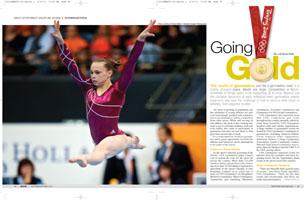
The world of gymnastics, just like a gymnastics meet, is a highly charged place. Meets are large. Competition is fierce. Hundreds of things seem to be happening all at once. Beyond just the complex dynamics of each individual meet, gymnastics events organizers also face the challenge of how to serve a wide range of athletes, from beginner to elite.
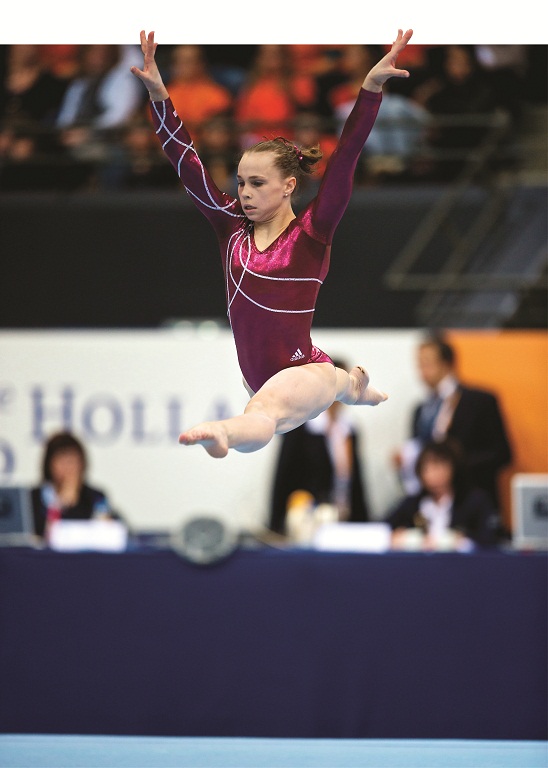 |
| Photo courtesy of Dean Atkins - Timeless Images Photography |
The sport is growing in popularity, but the schedules of young athletes are also ever-increasingly packed with academic and social demands as well as competition from other sports. While still serving its elite athletes, the sport is also creating new ways to serve a broader audience, kids and even adults who want to participate in gymnastics but who are less likely to find gym time several days a week.
It’s a wider-than-ever world for gymnastics and a great opportunity for both the athletes and America’s sports destinations to be a part of the action.
A Meet for Every Athlete
As the sport’s national governing body (NGB), USA Gymnastics plays a major role in setting the tone for the sport all across the country. More than 110,000 member athletes and professionals, including more than 92,000 athletes registered to participate in the Junior Olympic or elite programs, compete in or coach one or more of USA Gymnastics’ six disciplines: Women’s Gymnastics, Men’s Gymnastics, Trampoline and Tumbling, Rhythmic Gymnastics, Acrobatic Gymnastics and Gymnastics for All (Group Gymnastics).
USA Gymnastics also sanctions more than 3,500 competitions and events throughout the country annually, which include those hosted by USA Gymnastics member clubs and outside organizations. A large number of gymnastics events are hosted by USA Gymnastics’ constituent organizations, including Amateur Athletic Union, American Sokol Organization, American Turners, College Gymnastics Association, Jewish Community Centers, National High School Gymnastics Association, Special Olympics and the YMCA of the USA, among others.
USA Gymnastics sanctions events for athletes from the youngest and most beginning levels, but the organization plans events at the sport’s most elite echelon.
State, Invitational, Regional
“There are basically three general types of events,” says Steve Penny, president, USA Gymnastics. “There are the state events and invitationals, and those are really mass participation events. Our largest meets around the country attract 1,500 to 3,000 kids. Because these events bring such significant crowds, they’re a good investment for destinations and hotels in terms of room nights. Our state and regional championships tend to be very similar.”
These large events are typically held in convention centers and ballrooms, since they require an abundance of floor space and a specific list of facility specs, such as a minimum ceiling height and room length.
The John S. Knight Convention Center in Akron, Ohio, is an ideal example.
“For many years, our community was home to a number of Flights events, so we know how to create a successful gymnastics event,” says Mary E. Tricaso, CSEE, CSE, director of sales, Akron/Summit Convention & Visitors Bureau.
The 129,000-square-foot, $33 million facility features a 15,000-square-foot conference center area, 30,000-square-feet of exhibit space, a multi-purpose rotunda lobby, a 15,000-square-foot banquet hall and 18 meeting rooms. The Center’s exhibit hall can accommodate up to 2,000 attendees and 500 competitors with lower meeting rooms that offer back-of-the-house access to the competition floor, making them ideal for use as private offices and judges’ and coaches’ rooms.
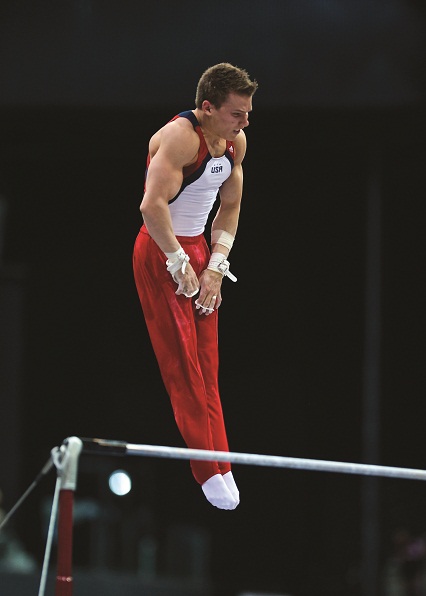 |
| Photo courtesy of Dean Atkins - Timeless Images Photography |
Ease of access is also critical for gymnastics athletes and their families, since athletes often come and go regularly during a weekend-long (or longer) meet, so parking and proximity to hotels can be key.
“With 770-plus parking spaces in a skywalk-attached deck, which is free on weekends and after 5 p.m. on weekdays, as well as two hotels within walking distance, the John S. Knight Convention Center takes the stress out of getting where you need to go, so participants and their families can just focus on enjoying the experience,” says Tricaso.
Of course, gymnastics can be a travel-heavy sport, particularly for upper level athletes, so cost is a deciding factor for most event owners.
“In Akron/Summit, we are committed to being competitive in our rates with events, hotels and the Convention Center,” says Tricaso.
Colorado Springs, home of the United State Olympic Committee (USOC) as well as over 45 National Governing Bodies (NGBs) and other national sports organizations, is another key destination for gymnastics events.
“USA Gymnastics holds two significant gymnastics competitions—Men’s Future Stars Program and Region 9 Championships—at the U.S. Olympic Training Center in Colorado Springs. The Men's Future Stars Program consists of five age groups—8-9-year-olds, 10-year-olds, 11-year-olds, 12-year-olds and 13-year-olds —who perform selected skills and compulsory routines on the six men’s events, plus strength and flexibility evaluations,” explains Cheryl McCullough, sales manager, sports and special events, Colorado Springs Convention and Visitors Bureau. In April, USA Gymnastics held their Collegiate Championships at the U.S. Air Force Academy in Colorado Springs.
Junior Olympics & Elite
The second type of gymnastics event is what Penny refers to as “program events,” which include the Junior Olympics (JO) championships.
“Those are also decent heads and beds events with a large number of athletes attending, but the caliber of the athletes is at a higher level,” says Penny. “The JO level is designed to move kids up to elite. These events also tend to require small arenas or convention centers.”
USA Gymnastics’ premier events are nationally televised and can draw sellout crowds, requiring not just a larger venue but also one with the most modern technological capabilities.
Providence, Rhode Island, is home to one such venue: the Dunkin Donuts Center, a 31,000 square foot arena that is home to the AHL Providence Bruins and the Big East Providence College Friars. But this is more than just a modern arena, the Dunkin Donuts Center connects to the Rhode Island Convention Center, with its 100,000-square-foot exhibit hall, 23 meeting rooms and 20,000-square-foot ballroom.
“We will be bidding on USA Gymnastics’ Visa championships, and we truly feel we have the perfect setup in Providence,” says John Gibbons, executive director, Rhode Island Sports Commission. “The space allows USA Gymnastics to hold its meetings and events all in one place, and the site includes an attached hotel. In fact, there are six hotels within blocks of the Center. One of the great things about Providence is that everything is within walking distance.”
The Gymnastics Pyramid
But in the whole range of gymnastics events, the most important thing, according to Penny, is being able to embrace the full spectrum of athletes.
“Of the national NGBs, there’s only a few of us that really control the whole pyramid,” he explains. “What’s really unique about USA Gymnastics is that we impact kids as young as six all the way up to elite. The pathway is well designed, fostering athletes’ growth from the moment kids get involved up to the top levels. Our ability to wrap our arms around the entire sport, without competing interests or governance conflicts is what makes us successful. Our constituents are truly our focus.”
Penny explains that the sport has seen steady growth over the last decade, garnering an average of 30 percent growth across all areas of membership. The Olympic team’s success in Athens and Beijing came at the ideal time for gymnastics. Just as the economy was beginning its downturn, the popularity of the Olympic team gave the sport an influx of new interest and athletes.
USA Gymnastics’ constituent organizations have benefitted from this influx as well.
“We’re not the National Governing Body (NGB); we have a different direction. Our competitive gymnastic program moves in a different direction based on long-term skill development. It’s built on an intentional slowing down of the learning curve allowing more time to develop the more advanced skills,” says Paul Spadaro, president, United States Association of Independent Gymnastics Clubs (USAIGC). “We believe our gymnasts need to be kids. Our coaches drive the competitive program, and, after the success of recent years, they truly believe we’re here to stay. I believe bigger growth is definitely ahead of us.”
When Spadaro took USAIGC over in 2001, he opted for a new direction in the sport of gymnastics. The organization’s membership is built around club owners who are creating competitive opportunities for gymnasts. The organization has built to 130-140 clubs with membership up 30 percent in the last year.
The USAIGC currently partners with Hyatt for its international and national championships, which it hosts on the east and west coasts in alternating years.
Speaking from the organization’s national championships this July, Sparado says, “I’m extremely happy. This has been a great championship at the Hyatt hotel in Palm Springs. We’re able to bring families together, not just for gymnastics but for a complete family experience.”
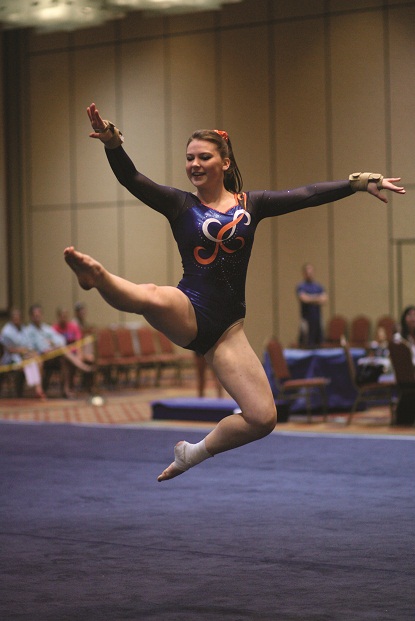 |
| Photo courtesy of Dean Atkins - Timeless Images Photography |
USAIGC puts a high priority on the social experience of its gymnastics meets, giving athletes the opportunity to meet others from all around the country and world, so while the organization looks for hotels with large ballrooms or a convention center that has the size to accommodate its gymnastic competition, it also seeks an environment that encourages athletes to meet and mix. Of course, cost is also a major consideration, and this has been a big plus of working with Hyatt, which has offered competitive pricing that makes the organization’s meets attainable for all its members.
“We hold our competitions in ballrooms, and we need at least 18-20,000-square-feet of space,” says Spadaro. “ We love the hotel atmosphere because the parents can be up close and personal. I don’t want to put the parents 100 feet away like they’d have to be in a bigger place.”
USAIGC events last six days, and every gymnast qualifies to compete in the organization’s national and international championships. As a result, the organization places significance on holding the competition in alternating locations, so that the same families don’t have to travel across the country each year. As membership grows, the USAIGC is considering adding a Midwest destination to its rotation.
Sponsorship
Whether it’s a local, state, regional or national competition, mitigating the costs of hosting a gymnastics meet is a serious consideration for event owners.
Ron Ferris, owner of the Ohio Gymnastics Institute, Inc. and the AAU National Sport Chair for Gymnastics, explains how his club goes about seeking sponsorships to support their events. “We typically put up the opportunity for members supporting our event to go out and acquire sponsorships. Our hospitality committee, for example, might get food donated. Those companies making donations get recognition and the people with the contact that leads to a sponsorship get a finders’ fee.”
Food is a major consideration, says Ferris. With coaches and officials spending long hours at meets, the host organization is obligated to provide some kind of food, but in-house catering can be extremely expensive.
“We have to find a way to economically feed the coaches and staff, which means working with a facility that allows us to bring in food paid for by sponsors,” says Ferris.
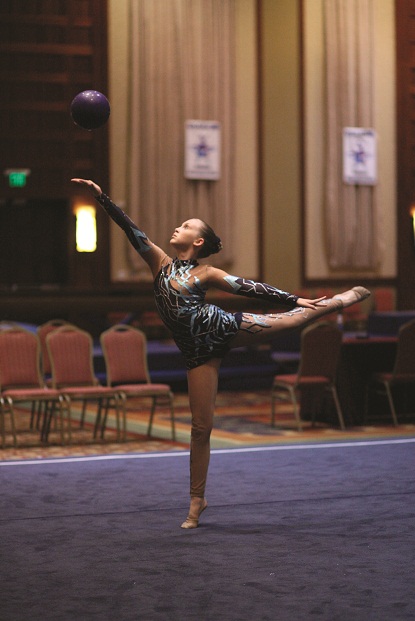 |
| Photo courtesy of Dean Atkins - Timeless Images Photography |
For national AAU events, title sponsors are acquired and cleared through the national AAU organization. USA Gymnastics’ elite meets also involve title sponsors. “AT&T, Visa and Covergirl have been consistent partners, and they’re a big part of what makes an event successful,” says Penny. “But a successful event at any level requires good partners.”
Penny’s advice for event organizers is to make sure that transactions with partners or with venues are as transparent as possible. “A win-win approach is always the way to go. We need to succeed as a team and have every party reap the benefits of a successful event.”

